
Professional Skills Training: Competence and Care

Data – What Data?! [2021/22]
Aalia has been asked to put together data for a regulatory submission, looking at an international insurance group’s (headquartered in the UK) exposure to various potential catastrophe events around the globe. She discusses their difficulties with colleague Jools, whilst being pestered by Cliff who is the Compliance Manager to ‘just put together whatever they can’ to meet the regulatory submission deadline.
Data – What Data?!
Independence Day [2021/22]
A reliable Insurance company is considering the best option for a tranche of its business. Colette (Actuarial Director) puts Marco (Senior Actuary) in charge of the project but indicates the answer she’s looking for. Marco’s team does the analysis and despite him knowing that it doesn’t give the result Colette was looking for, feels compelled to follow his professional instincts regardless.

The Pitch [2021/22]
An insurance company has invited an actuarial consultancy to a meeting to pitch for a climate change and sustainability project. Through a lack of preparation, in-built biases and preconceptions by the consultancy staff, the meeting goes from bad to worse.
The Pitch
In the Dock [2020/21]
High-flying actuary Alex ‘appears’ to find herself ‘in the dock’ regarding some routine procedures she may or may not have carried out whilst dealing with a client on communications and conflicts. Alex’s recollection of her actions are weak, leading her to become more and more uncomfortable. But when it turns out to be just a “bad dream” she feels her subconscious may be trying to tell her to reflect on her work and commit to being more thorough.
In the Dock
Keep the Boat Steady [2020/21]
Having trained and qualified as an actuary in the UK, Ayo is looking for a medium to senior role in his native Africa. He attends an interview at a local insurance company with an international parent. The Senior Actuary is looking to bring someone in who can refine current processes within the business but without' rocking the boat' too much. Ayo is keen to hear about the current approach for setting pricing and valuation assumptions in this developing market and has some probing questions before deciding whether this role is a good fit.
Keep the Boat Steady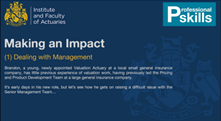
Making an Impact [2020/21]
Brandon, is a young, newly appointed Valuation Actuary at a local small general insurance company. He has had little previous experience of valuation work, having previously led the Pricing and Product Development Team at a large general insurance company. There are three scenarios – the first is where he has to deal with a difficult issue with the Senior Management Team; the second is where he has to make a presentation to the Board; and the third is where he has to manage more experienced and junior members of staff.

New Boss, New Approach [2020/21]
Rachael was promoted to Head of Valuations 2 years ago at the firm she joined as a trainee some 8 years earlier. She has a good rapport with the Chief Actuary, Brian, who is about to retire and helps him produce key reports for the firm. Things change however once his successor, Harry, is in place and Rachael struggles to adapt to a new style of leadership and approach.

Three Days [2020/21]
Clyde has been with the company for four months and has just been added to the client team for a large, important client, Massomax, headed by team-leader Danica. To date Clyde has also been working for smaller clients which earn less in fees, including TiniMicro, with team-leader Susan. Clyde has a statutory deadline approaching for TiniMicro and there will be a fine if he misses it. However, Danica urges Clyde to prioritise work for their bigger paying client Massomax, hinting that prioritising her work will be good for Clyde’s career progression. See what happens when Clyde attempts to resolve the competing pressures.

Too Close for Comfort [2020/21]
Marcus and Alison are both actuaries and a married couple work at competing firms. Here they describe, via phone calls and video diaries, the pitfalls of working from home, sharing a makeshift office and having to manage confidential processes in a confined space. Confidential information on screens and Marcus’s inquisitive mother make balancing work and two young daughters at home much more challenging than necessary.

Inside the Black Box [2019/20]
Black Box Insurance sets up Project Polar with a multidisciplinary team of actuaries and data scientists to implement a pilot using AI technology for insurance renewal pricing – quicker, faster, less human interaction for competitive advantage. Watch how this unfolds and issues that arise when the Board decides to skip the pilot and go straight to full implementation of the technology.
Inside the Black Box
My Model is Better than your Model [2019/20]
Belinda, a Scheme Actuary, has some questions around the model proposed by the Corporate Actuary Carl for the mortality assumptions in a Scheme funding review. Carl is less than cooperative in helping Belinda understand the model, claiming the information is confidential and anyway, it's an industry approved model that everyone is using. Which of them is being unreasonable here?
My Model is Better than your Model
Shortcut to Success [2019/20]
Niels, a partner in the firm, has set a multidisciplinary project team a deadline of one week to come up with a best estimate price for a particular project. The team are set to work long hours and get off to a good start. However the following day, things start to look less clear and the team are under pressure to meet the Friday deadline. On Wednesday Niels bursts into the project room looking for a result as he still needs to get approval and deliver the report by Friday. The team are taken aback that the deadline has now shrunk by two days and they are under pressure to come up with a recommendation.

Slippery Slope [2019/20]
Susan, a Risk Actuary, is faced with a dilemma when asked to deputise for the Chief Risk Officer, Don, in his absence, at a proposal meeting the following day. Susan learns that Ian, the Financial Director, has submitted a proposal to get the go-ahead for a new insurance product at the meeting and knows that the Sales Director, Raymond, will be keen to launch the product the following month. Susan has concerns about the short timescale to thoroughly review the risks and is worried about the potential impact on the company's profitability and audit. However, she comes under considerable pressure from Ian to support the product launch at the meeting.
Slippery Slope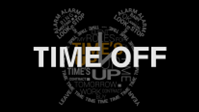
Time off [2019/20]
Andrew, a partner at a small actuarial consultancy, is keen to win a new property modelling project. A tender proposal is drawn up citing Kieran as the firm's properly modelling expert, despite Kieran making it clear that he is no expert in this area and in any case is about to go off on 6 months' paternity leave. Nonetheless, the proposal is submitted and the consultancy is awarded the contract - what now?
Time off
All in a Day’s Work [2018/19]
Andrew, Chief Actuary at ILAC Singapore is in the middle of filming a promotional video as part of a recruitment drive, when Pui Yee, a recent recruit, lets slip she is about to download “Actuarify” software, a comprehensive reinsurance comparison tool from her previous company. Andrew abandons the promotional shoot and steps in with some advice for Pui Yee, before putting her professional judgement to the test.
All in a Day’s Work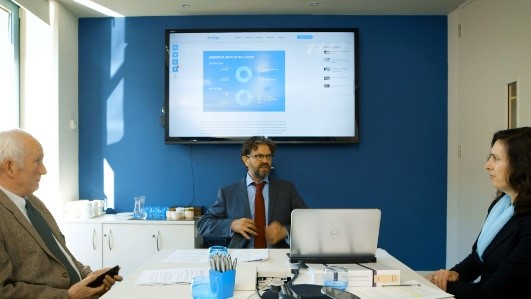
Bored Board [2018/19]
James has recently become a Non-Executive Director (NED) for a small Financial Services company. In view of his background he has been asked to join its Risk Committee. He is attending his first meeting of the Committee where the key item on the agenda is cyber security. The meeting arrives at some action points but James is not wholly comfortable with them.
Bored Board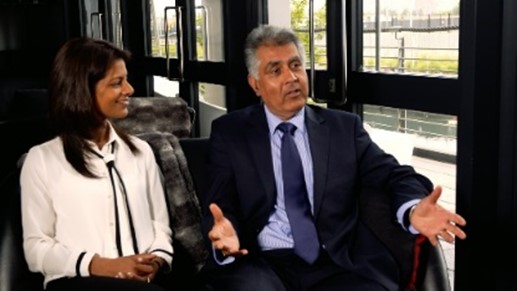
Contribution Conundrum [2018/19]
Frank, a newly appointed Scheme Actuary, meets his clients who have an exciting business plan in place to grow their business and envisage the deficit in the pension scheme being paid off in 2 years’ time. Frank has different views to those of his predecessor and his clients are not happy when he shares this with them.
Contribution Conundrum
Head to Head [2018/19]
Chief Reserving Actuary, Peter, presents a range of reserves at an annual meeting. After being challenged he suggests a narrower range. However the Finance Director, Stephanie, is clearly not happy and seeks advice from an actuary friend. Armed with this information, at a subsequent meeting she then proposes setting the reserves at a much lower figure which is even below the bottom end of Peter's earlier recommendations and puts pressure on the Board to swiftly agree. Let's see how Peter reacts.
Head to Head
Does this Add up? [2017/18]
Sara has been providing advice to pension scheme client, Tremwell, who want to make medium to long-term plans to bring their scheme into a funding position. The team has been developing a new model 'Project Gemini' which is relatively untested. With rumours of a proposed company sale, Tremwell is keen to use the software to produce the company valuation, but doesn’t want to pay for testing or controls. Des, the project Manager is under pressure and doesn't think the model is ready, especially with so much riding on the model outputs, and of course he needs it to be fit for purpose for all clients, not just Tremwell.
Does this Add up?
Singaporean Life [2017/18]
Andrew, an IFoA qualified actuary, returns to Singapore having been promoted to a senior role in an international Life Assurance company following a 2 year stint in their Head Office in Geneva, Switzerland. A few months into the role Andrew is facing some professional dilemmas and is feeling rather isolated in this international, multidisciplinary environment.
Singaporean Life
Look before you Leap [2016/17]
Mike and Samantha are experienced actuaries and co-founders of their two person actuarial consultancy. On the strength of winning a lucrative contract with Gertax Insurance, a small but successful company, Mike agreed with Samantha to invest significantly to update their IT equipment. However, upon re-reading the project definition ‘terms of reference’ document Mike is dismayed to see that it is not as robust as he would wish. Difficult discussions with the client’s project sponsor follow and Mike is left in no doubt that he will need to deliver or face the consequences.
Look before you Leap
Capital Modelling [2015/16]
The firm has completed their £30m Solvency II project successfully, and has been advised that the Internal Model approval has been granted by the Regulator. The company's CFO is pleased, and anticipates a return to a more normal level of costs, given the investment in this priority project. Now the company has the ability to set its own capital for regulatory purposes, the CFO also intends to make full use of this capability. The Capital Actuary, however views the initial model approval as simply a project milestone and that further investment is needed for improvements.
Capital Modelling
Silver Bullet [2015/16]
An Insurance company, led by Ellen, has a strategy to grow by acquisition. Project 'Silver Bullet' is the due diligence phase on their number one target, who have put themselves on the market. They have been given access to a 'data room', within which they think is the important information for a buyer to assess the company. It's highly market sensitive, so only a very small team is allowed to know the work is going on and as with most due diligence, it is being done under extreme time pressure, with information being made available for only a few days before a final decision has to be made! Nathan, an actuary, is tasked with carrying out the valuation and expresses doubts about the acquisition at the anticipated acceptable price, amidst concerns that some areas of the business are high risk.
Silver Bullet
A Principled Approach or the Easy Option? [2014/15]
Serena, a recently qualified actuary, puts a proposal to Victoria her boss, in respect of maturity pay-outs for a closed group of policyholders, for which the calculations rely on the, soon to be abolished, statutory regime in the UK. Serena’s simplified calculations would be sustainable and, subject to estimated future expense savings, affordable. Due to pressure from the Board to constrain budgets Victoria suggests Serena should change the assumptions to come up with a narrower range of outcomes and a good rationale that any underpayments are not material. Choose your own ending: i) Serena maintains her ground, ii) Serena gives in to pressure.
Mini Case Studies
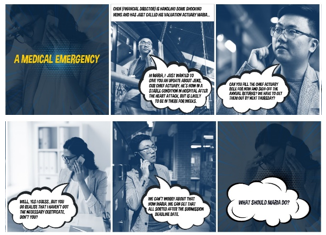
A Medical Emergency [2021/22]
Chen, a Financial Director, is given shocking news that the Chief Actuary is in hospital and is likely to be there for weeks. He phones Maria, an actuary, and asks her to fill the Chief Actuary role and sign-off the annual returns as they are due out imminently. Maria makes Chen aware that she hasn’t got the necessary certificate but Chen says not to worry about that just now and that it can be sorted after the submission deadline. What should Maria do?
A Medical Emergency
Chat IT Over [2020/21]
Sébastien, an actuary working for a consultancy that designs chatbot algorithms, finds himself having to explain some inappropriate chatbot product recommendations to the Insurance Regulator.
Chat IT Over
Risky Business? [2020/21]
Ning, an actuary, works within a team of actuaries and data scientists which has developed an underwriting tool which uses machine learning from a variety of data sources. The results are used to calculate customer premiums based on a risk score. What are the implications?
Risky Business?
No Obligation? [2020/21]
Bea, a salaried Partner in a large consultancy, is considering whether she has any obligations under the IFoA Actuarial Profession Standard (APS) X5: Compensation for Professional Shortcomings.
No Obligation?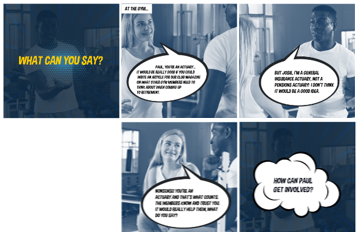
What can you say? [2020/21]
Paul, a General Insurance actuary, is asked to write an article for his local gym’s magazine on retirement planning for its members.
What can you say?
Copyright [2018/19]
A colleague puts forward a proposal at a meeting to mimic the proprietary actuarial software you are licensing from an external firm as a money saving exercise. What should you do?
Copyright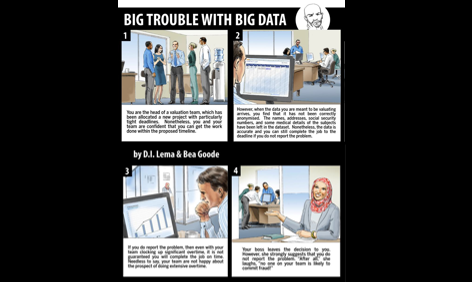
Big Trouble with Big Data (2017/18)
You discover that data you are working with has not been correctly anonymised but if you report it you aren't going to make the project deadline.
Big Trouble with Big Data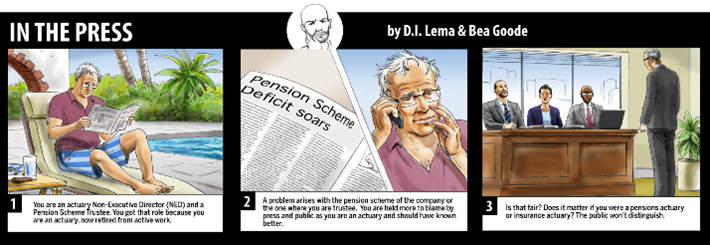
In the press (2017/18)
You are a retired actuary Non-Executive Director and a Pension Scheme Trustee. When a problem arises with the scheme you find yourself the focus of Press attention. Is that fair?
In the Press
Moving on! [2016/17]
You are happy to take on a new role even though it presents some challenges for you in terms of your experience, as a very experienced colleague is to act as your mentor. Two weeks into the role, you hear that your mentor has decided to retire next month. What are your options?
Moving on!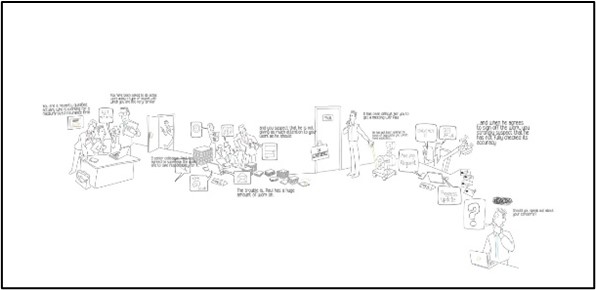
Who’s Supervising Who? [2016/17]
You have concerns that your senior colleague who has been asked to supervise your work, has signed it off with very little scrutiny.
Who’s Supervising Who?